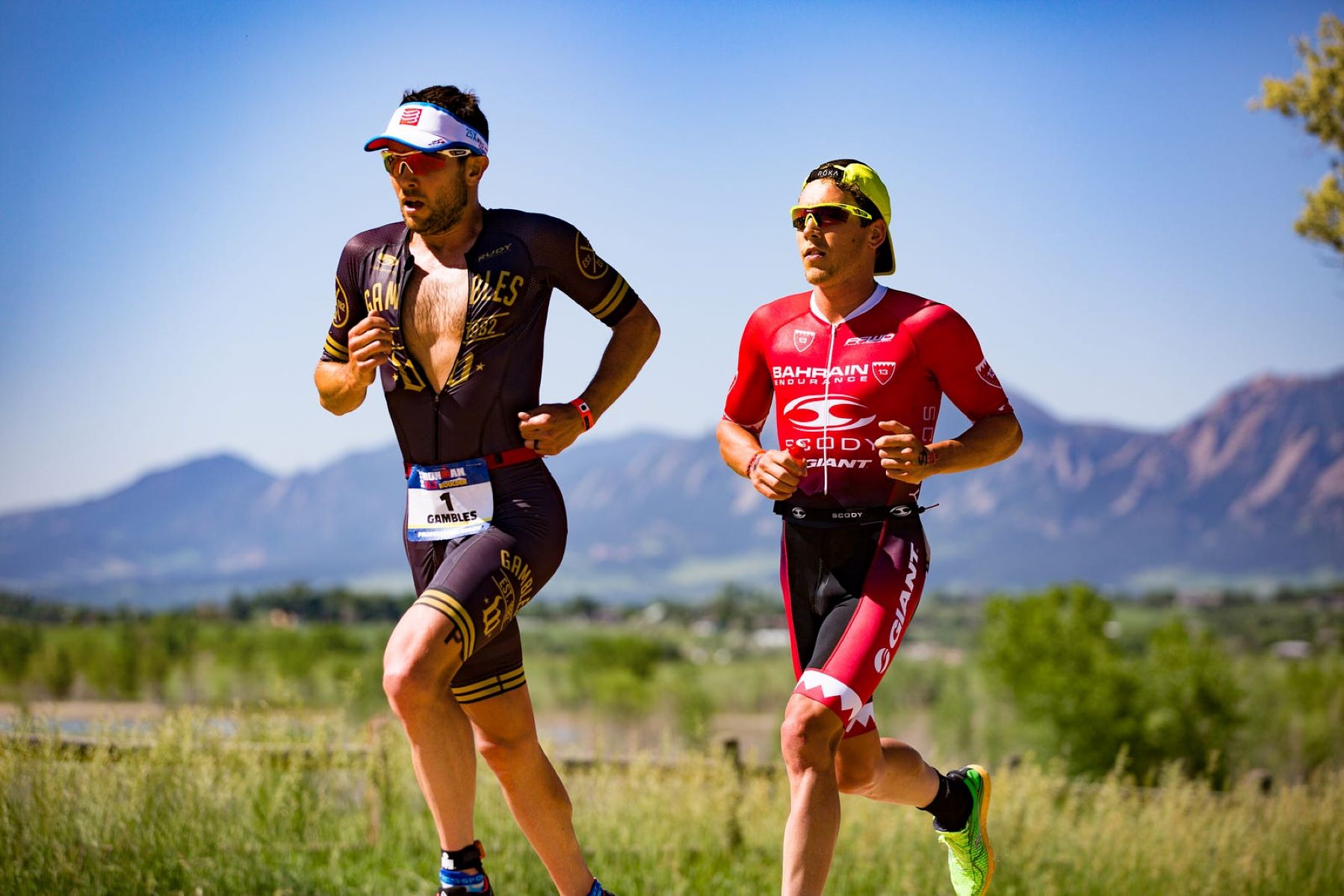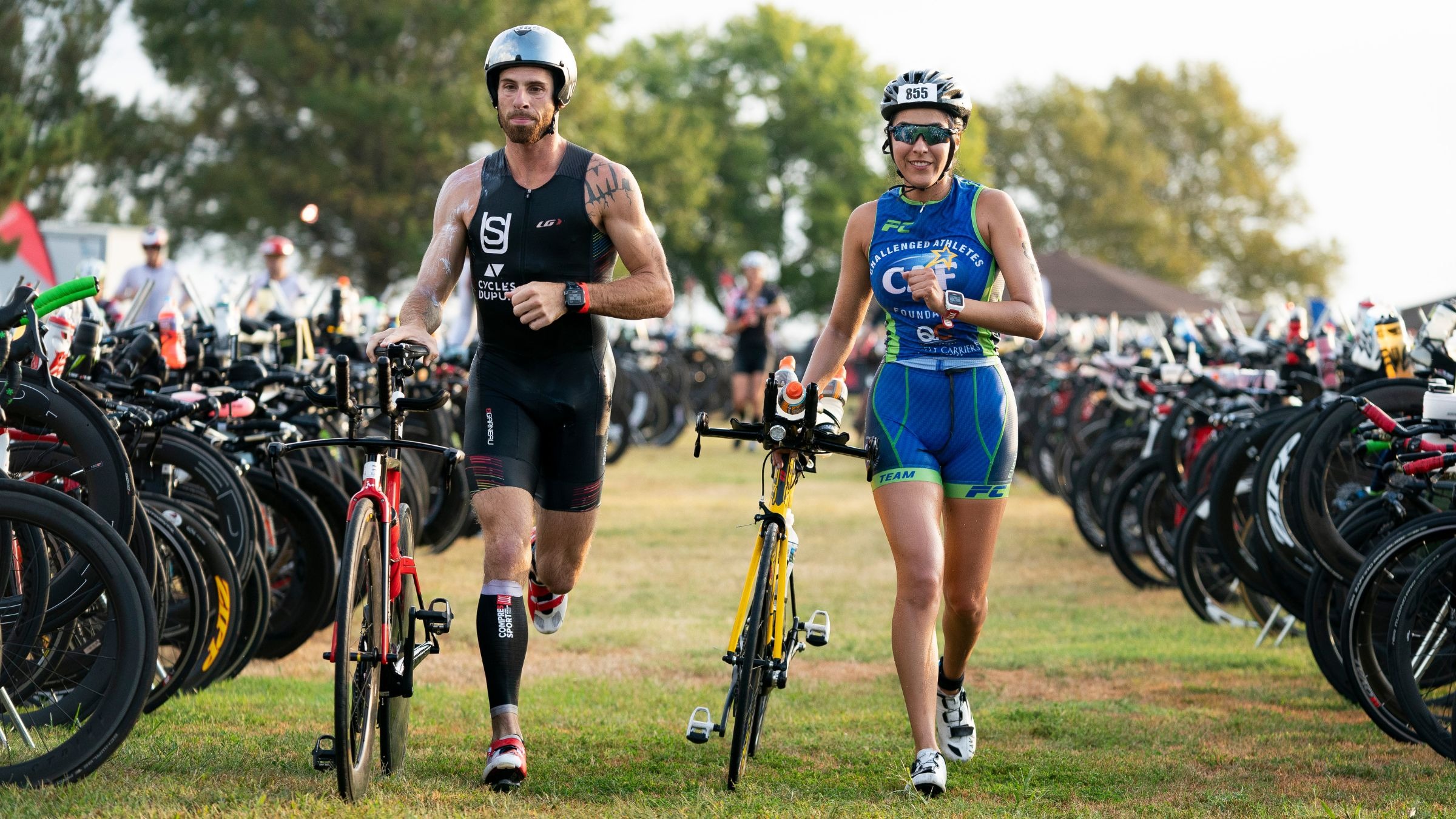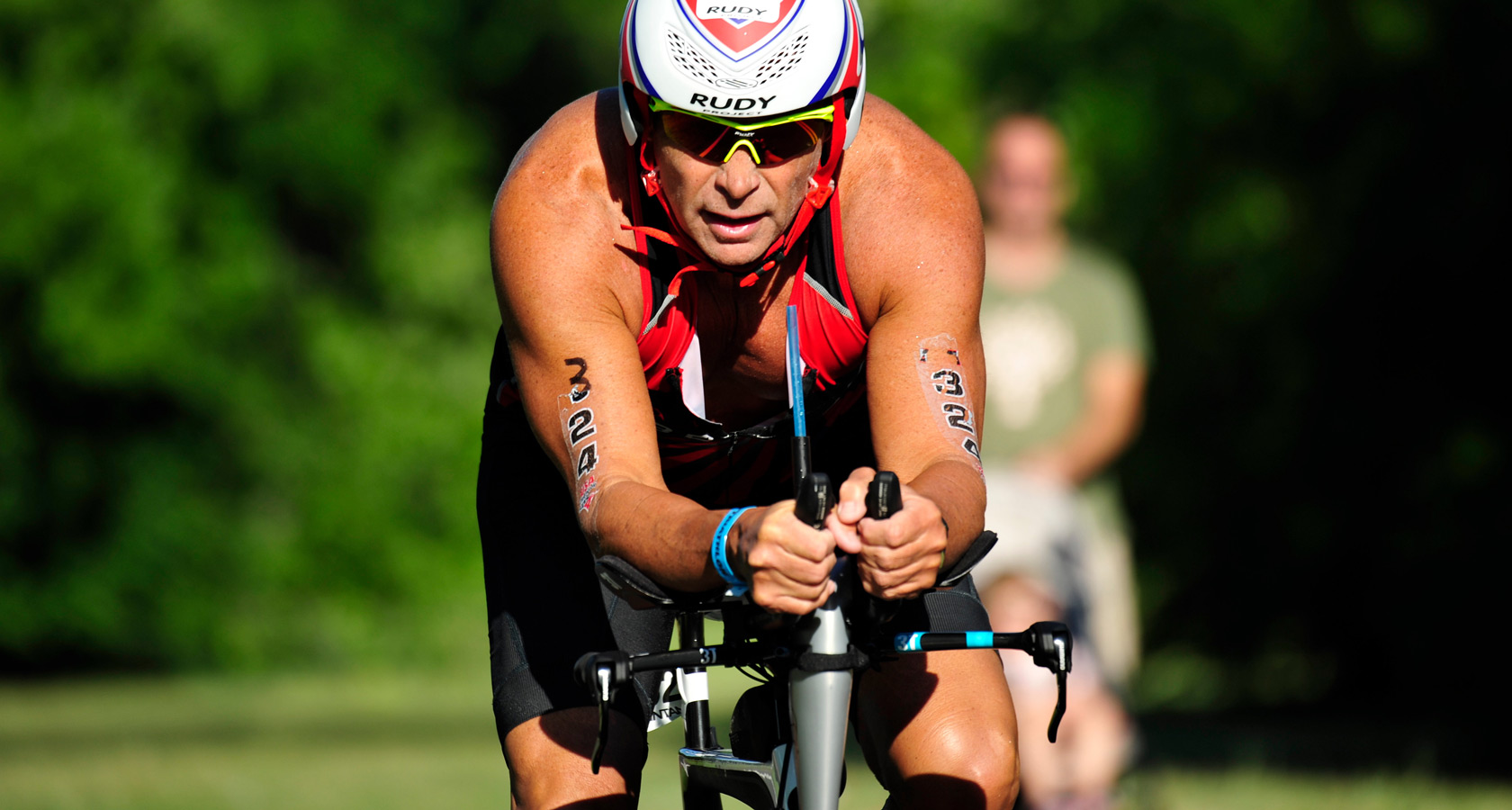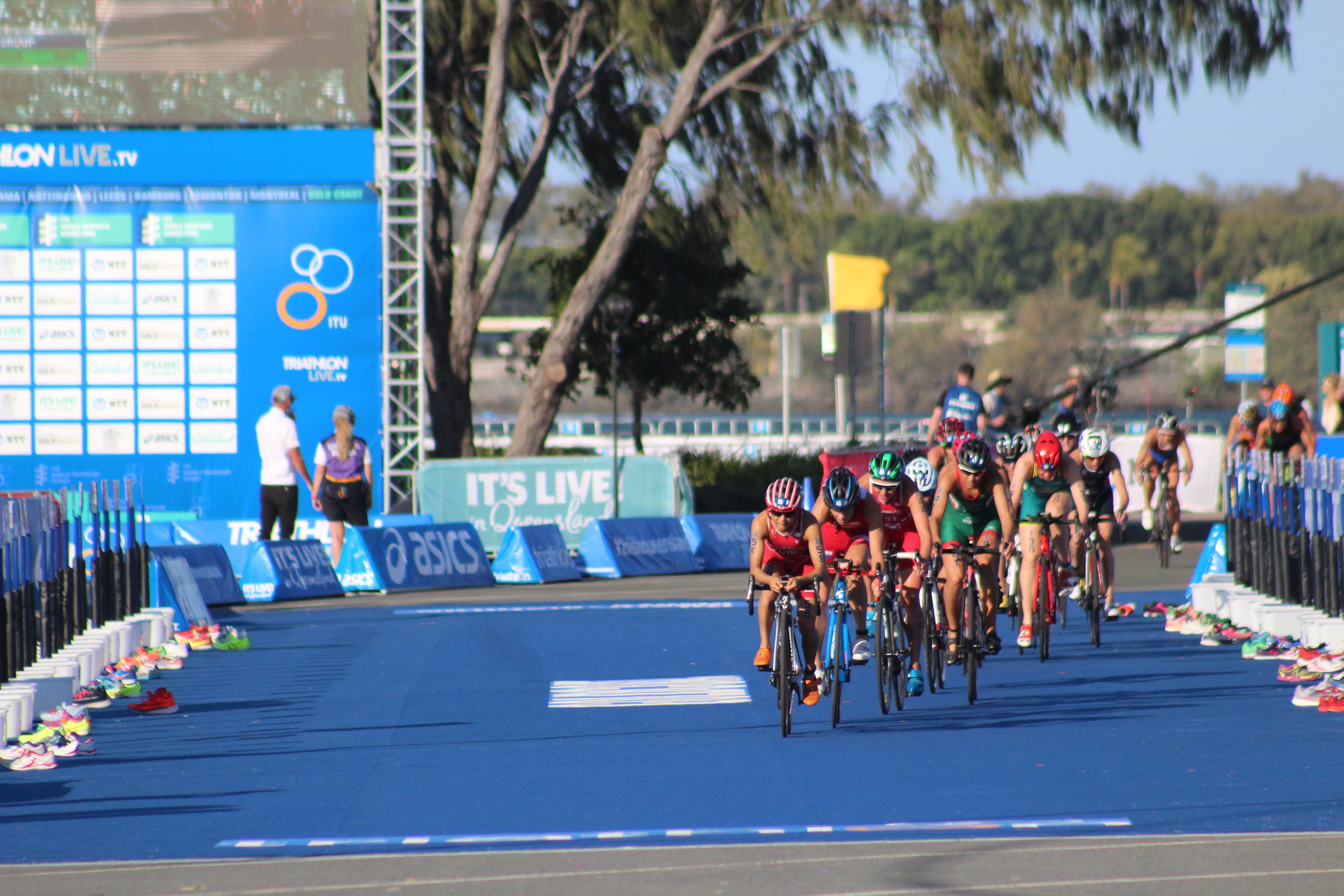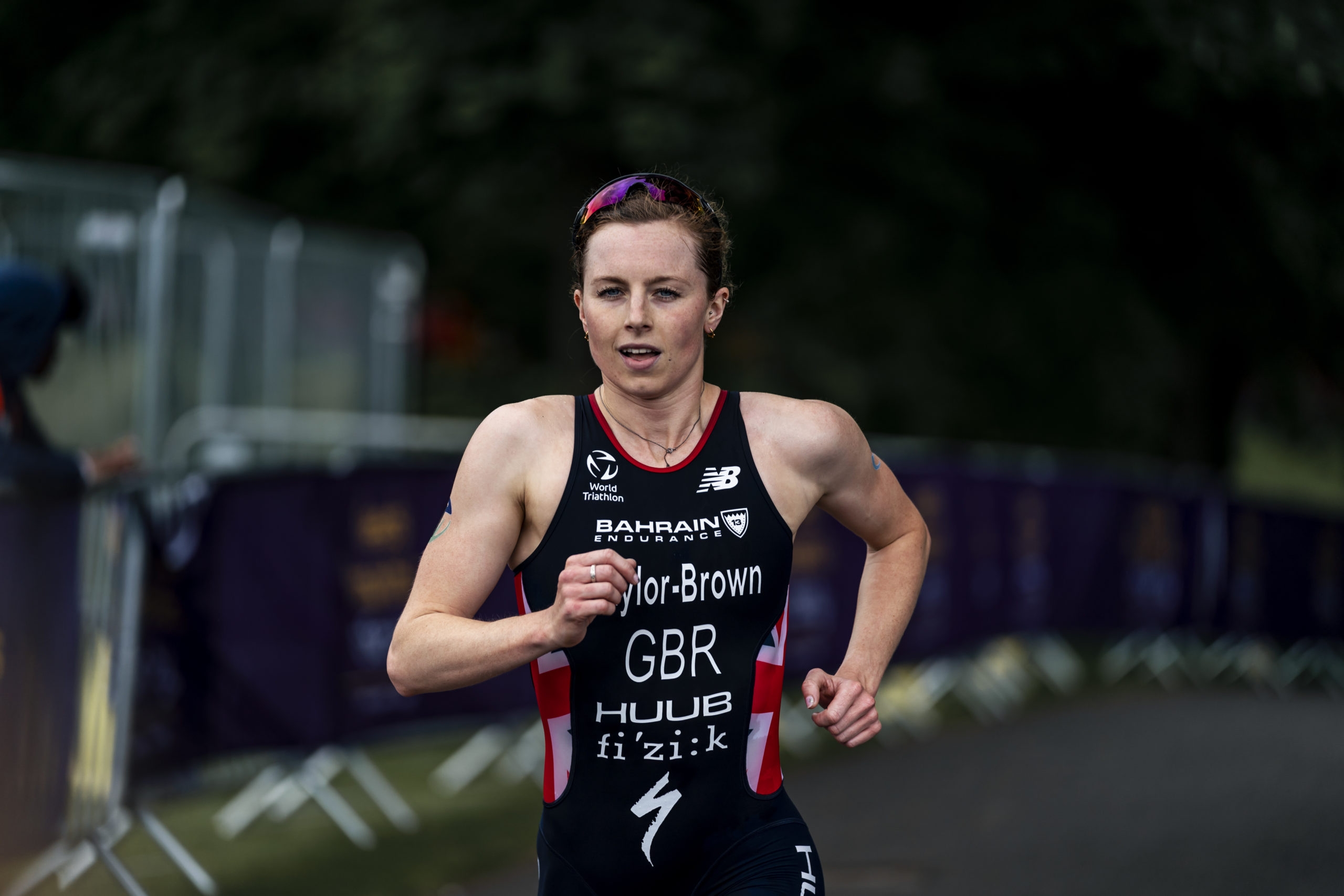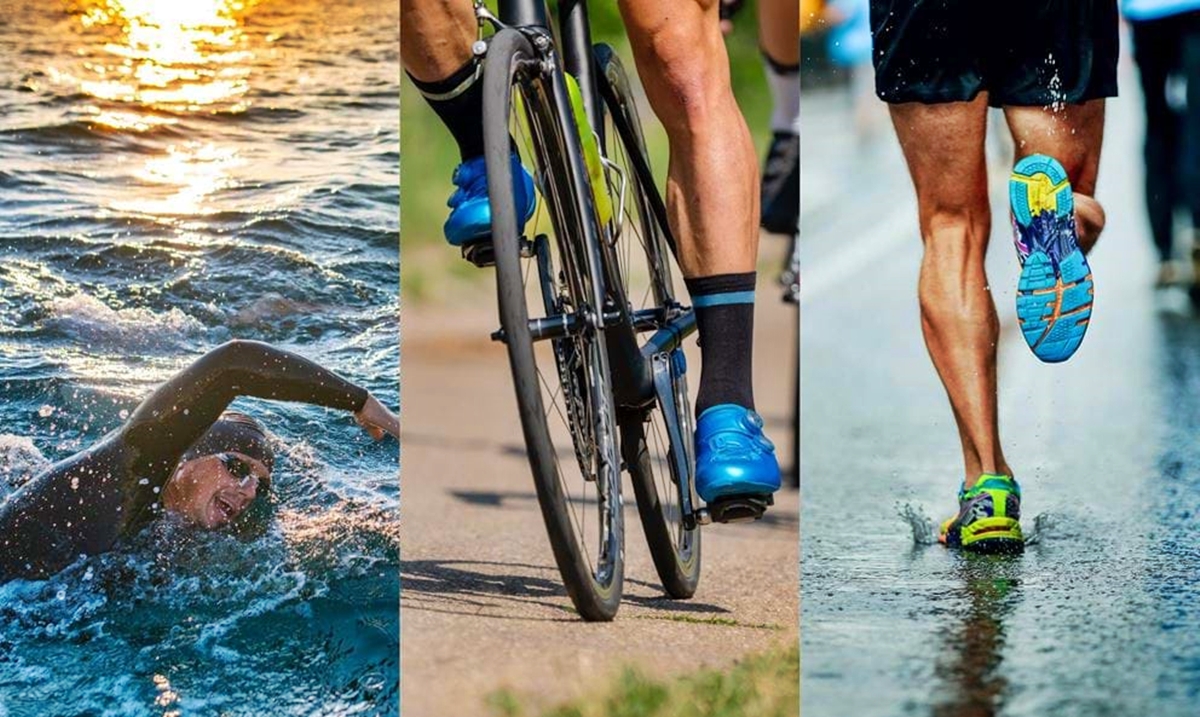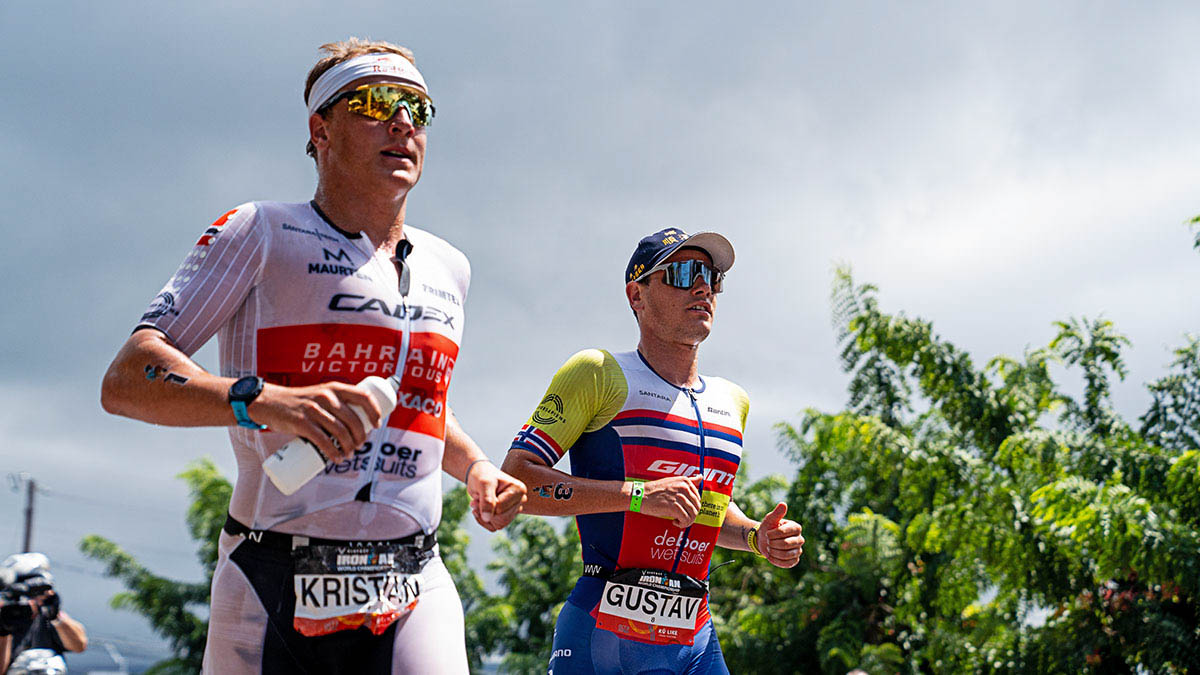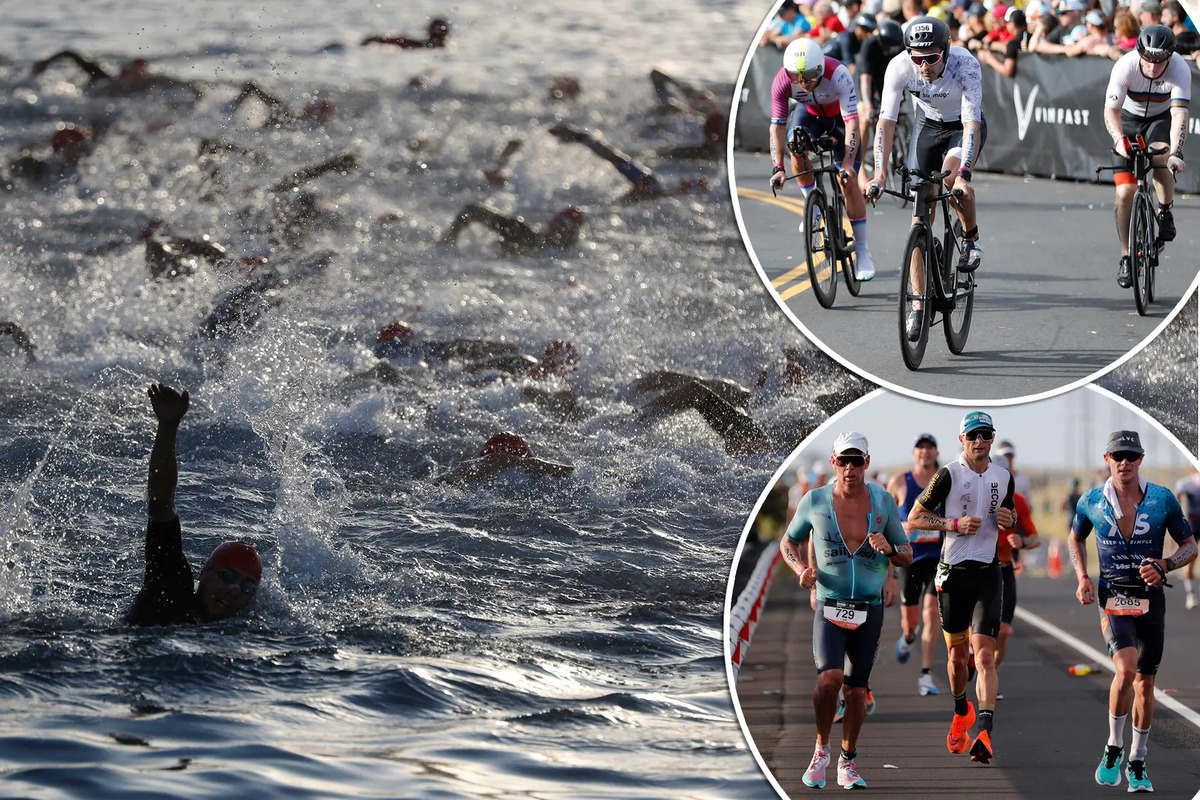

Featured
How Long To Train For A Triathlon
Modified: January 2, 2024
Discover how long it takes to train for a triathlon, including tips and advice from featured athletes. Prepare for your race and reach your ultimate fitness goals!
Introduction
Triathlons have gained immense popularity in recent years, attracting athletes from various fitness backgrounds who are up for the ultimate endurance challenge. Combining swimming, cycling, and running, these multi-sport events test an individual’s physical and mental fortitude. But how long does it take to train for a triathlon? The answer to this question may vary depending on several factors, such as your current fitness level, experience in each discipline, and the distance of the triathlon you wish to participate in.
Training for a triathlon requires meticulous planning, consistency, and dedication. It’s important to set realistic goals and create a well-structured training schedule to ensure you are adequately prepared for the event. This article will guide you through the essential components of triathlon training and provide tips to optimize your preparation time. By following these guidelines, you can enhance your performance, minimize the risk of injury, and ultimately cross that finish line with confidence.
Choosing the Right Triathlon
The first step in your triathlon training journey is to choose the right event that aligns with your abilities and goals. Triathlons come in various distances, ranging from sprint and Olympic to half and full Ironman. Consider factors such as your current fitness level, experience in each discipline, and the amount of time you can dedicate to training.
If you are new to triathlons or have limited experience in any of the three disciplines, starting with a sprint distance triathlon is a wise choice. These races typically involve a 750-meter swim, a 20-kilometer bike ride, and a 5-kilometer run. Sprint triathlons are less demanding in terms of training time and physical exertion, making them ideal for beginners.
On the other hand, if you have a solid fitness base and are looking for a greater challenge, you may consider participating in longer distance triathlons. Olympic distance triathlons involve a 1.5-kilometer swim, a 40-kilometer bike ride, and a 10-kilometer run, while half and full Ironman distances require even more endurance and preparation. Evaluate your training availability and commitment before committing to longer races.
Additionally, consider the location and climate of the triathlon event. Choose a race that appeals to you in terms of location, scenery, and overall experience. Factor in the weather conditions during the time of the event, as extreme temperatures or challenging terrain can significantly impact performance.
Remember, the goal is not just to finish the race but to enjoy the journey and have a positive experience. Selecting the right triathlon that suits your abilities and preferences will make your training process more enjoyable and rewarding.
Setting Your Training Goals
Before diving into triathlon training, it’s important to establish clear and measurable goals that will guide your preparation. Setting specific goals will help you stay focused and motivated throughout the training process. Here are a few steps to help you set your training goals:
- Assess Your Current Fitness Level: Evaluate your strengths and weaknesses in swimming, cycling, and running. Identify areas that require improvement and determine your current endurance capabilities.
- Define Your Race Goal: Decide what you want to achieve in the triathlon. Do you aim to complete the race within a specific time or simply want to finish strong? Set a realistic and attainable target for your race performance.
- Break Down Your Goals: Break your overall race goal into smaller, manageable benchmarks. Set weekly or monthly targets for each discipline to monitor your progress effectively.
- Consider Time Constraints: Take into account your availability and daily schedule when setting training goals. Be realistic about the time you can commit to training each week.
- Include Non-Specific Goals: In addition to performance-based goals, consider incorporating non-specific goals that promote overall well-being, such as improving flexibility, reducing stress, or staying injury-free.
Setting clear goals will help you structure your training program and make it more purposeful. Having a focus and direction will enable you to track your progress, celebrate milestones, and stay motivated throughout the training journey.
Creating a Training Schedule
A well-structured training schedule is crucial for triathlon preparation, as it ensures consistency, progression, and adequate recovery. Here are some key points to consider when creating your training schedule:
- Determine Training Frequency: Decide how many days per week you can dedicate to training. Triathlon training typically involves training in each discipline multiple times a week.
- Balancing the Three Disciplines: Allocate training days for swimming, cycling, and running, keeping in mind the individual demands of each discipline and your specific goals.
- Vary Your Training Intensity: Incorporate a mix of easy, moderate, and high-intensity workouts to challenge your body and improve your fitness level.
- Include Cross-Training: Incorporate cross-training activities such as yoga, strength training, or Pilates to improve overall strength, flexibility, and prevent injury.
- Progression: Gradually increase the duration and intensity of your workouts over time to build endurance and improve performance.
- Rest and Recovery: Schedule regular rest days and easier training days to allow your body to recover and prevent overtraining.
- Adaptability: Be flexible and willing to adjust your training schedule to accommodate unforeseen circumstances or changes in your personal life.
Remember, everyone’s schedule and commitments are unique. Tailor your training schedule to fit your individual needs and lifestyle. Consistency is key, so find a training routine that you can realistically maintain without sacrificing other important aspects of your life.
Seek guidance from a qualified coach or training plan to help you create a well-rounded and effective training schedule. Their expertise can ensure that you have a balanced and progressive program that optimizes your training time and ensures you are adequately prepared for race day.
Cardiovascular Endurance Training
Building cardiovascular endurance is a fundamental aspect of triathlon training. Improving your heart and lung capacity will enable you to sustain effort over prolonged periods. Here are some strategies to enhance your cardiovascular endurance:
- Long Distance Training: Incorporate long, steady-state workouts in each discipline to improve your aerobic capacity. These sessions simulate the duration of the triathlon and help build endurance.
- Interval Training: Integrate interval workouts into your training routine to enhance your anaerobic threshold and increase your overall speed. Alternate between high-intensity bursts and active recovery periods.
- Tempo Workouts: Include tempo runs, bike rides, or swims to improve your ability to sustain a challenging pace for an extended period. These workouts should be performed at a comfortably hard intensity.
- Hill Training: Incorporate hill repeats into your cycling and running sessions to develop leg strength and cardiovascular fitness. This type of training helps improve your ability to handle varied terrain.
- Brick Workouts: Practice combining disciplines back-to-back in training sessions to simulate the transition between each leg of the race. This will help strengthen your cardiovascular system and adapt to the unique demands of transitioning from one discipline to another.
- Gradual Progression: Gradually increase the duration and intensity of your cardiovascular workouts over time. Start with shorter distances and lower intensity and gradually build up to more challenging workouts as your fitness improves.
Remember to listen to your body and gradually increase the intensity and duration of your workouts to prevent injuries or overexertion. Incorporating a mix of long, slow workouts and higher intensity sessions will ensure a well-rounded cardiovascular training program that prepares you for the demands of a triathlon.
Strength and Resistance Training
While cardiovascular endurance training is essential for triathlon performance, incorporating strength and resistance training into your routine is equally important. Here’s why you should include strength training and some key exercises to consider:
Strength training helps improve muscular strength, power, and durability. It also helps correct muscle imbalances, reduce the risk of injury, and enhance performance in all three disciplines of a triathlon.
- Squats: Squats are a compound exercise that targets the quadriceps, hamstrings, and glutes. They help improve leg strength and stability, which is crucial for cycling and running.
- Deadlifts: Deadlifts are a full-body exercise that targets the hamstrings, glutes, lower back, and core. They develop overall strength and stability, which is beneficial for all three disciplines.
- Lunges: Lunges target the quadriceps, hamstrings, glutes, and calves. They improve single-leg stability and strength, which is necessary for efficient running and cycling.
- Planks: Planks engage the core muscles, including the abdominals, obliques, and lower back. A strong core is vital for maintaining proper form and stability during all triathlon disciplines.
- Upper Body Exercises: Don’t neglect the upper body! Incorporate exercises like push-ups, pull-ups, and shoulder presses to improve upper body strength and maintain balance.
- Plyometric Exercises: Plyometric exercises, such as box jumps and burpees, help improve explosive power and agility, benefiting your overall performance and transitions.
Include strength training sessions two to three times a week, focusing on different muscle groups each day. Be sure to use proper form and technique while performing these exercises and gradually increase the weight or intensity as your strength improves. If you’re new to strength training, consider working with a qualified trainer to learn proper form and avoid injury.
Remember, rest and recovery are essential for strength gains, so allow adequate time for your muscles to recover between workouts. Combined with cardiovascular endurance training, a well-rounded strength training program will optimize your performance and help you excel in a triathlon.
Swimming Training
Swimming is often regarded as the most challenging discipline for many triathletes. Building swimming skills and improving efficiency in the water requires consistent practice. Here are some tips for effective swimming training:
- Work on Technique: Focus on developing proper swimming technique. Consider taking swimming lessons or working with a swim coach to refine your strokes, breathing, and body position in the water.
- Include Drills: Incorporate swimming drills into your training routine to isolate and improve specific aspects of your technique. For example, drills like catch-up drills, kickboard drills, and one-arm drills can help improve your stroke mechanics.
- Build Endurance: Gradually increase the distance and duration of your swimming workouts to build cardiovascular endurance. Include longer steady-state swims in your training program.
- Interval Training: Incorporate intervals into your swimming sessions to improve speed and anaerobic capacity. Alternate between faster-paced intervals and active recovery periods.
- Open Water Practice: If your race involves an open water swim, practice in similar conditions. Familiarize yourself with sighting techniques, swimming straight, and managing any challenges you may encounter during the race.
- Practice Transitions: Include transition practice in your swim training by doing short swim-to-bike workouts. This will help simulate the transition from the swim to the cycling leg.
- Seek Feedback: If possible, record yourself swimming or have a coach assess your technique. This can help identify areas for improvement and allow you to make necessary adjustments.
Swimming in a pool is different from swimming in open water. Whenever possible, practice in open water to become comfortable with the unique challenges it presents, such as sighting and dealing with currents.
Remember to incorporate rest and recovery into your swimming training to prevent overuse injuries. Varying your workouts with different drills and intervals will keep your training engaging and help you progress as a swimmer.
Cycling Training
Cycling is a critical discipline in triathlon, as it involves both physical endurance and technical skills. To improve your cycling performance, consider the following tips for effective cycling training:
- Build Endurance: Start by gradually increasing your cycling distance and duration to build cardiovascular endurance. Include longer rides in your training program, focusing on maintaining a steady pace.
- Hill Training: Incorporate hill repeats into your cycling sessions to improve leg strength and power. Hills provide an opportunity to challenge yourself and improve your climbing abilities.
- Interval Training: Include interval workouts in your cycling routine to improve your speed and anaerobic capacity. Alternate between high-intensity efforts and recovery periods.
- Long Bike-Run Sessions: Incorporate brick workouts, which involve cycling immediately followed by a run, to simulate the transition from cycling to running. This helps condition your body and mind for the race day experience.
- Focus on Technique: Pay attention to proper cycling technique, including maintaining a proper posture, pedaling with a smooth cadence, and practicing efficient gear shifting.
- Group Rides: Join group rides or cycling clubs to improve your ability to ride in a pack and experience different riding conditions. This can help build confidence and improve your bike handling skills.
- Bike Maintenance: Ensure your bike is in good working condition. Regularly clean and maintain your bike, and address any mechanical issues as they arise. A well-maintained bike is essential for a smooth and safe ride.
It’s important to gradually increase the intensity and duration of your cycling workouts to prevent overuse injuries. Vary your routes and terrain to build adaptability and improve bike handling skills.
As with any discipline, rest and recovery are essential for cycling training. Incorporate rest days into your training schedule and listen to your body to avoid burnout and injuries. Consistency and time in the saddle will help you improve your cycling performance and excel in your triathlon.
Running Training
Running is the final discipline in a triathlon and often determines the overall performance. Effective running training is crucial to improve endurance, speed, and technique. Here are some tips to enhance your running training:
- Gradual Increase: Begin your running training by gradually increasing the distance and duration of your runs. Focus on building a strong aerobic base to improve endurance.
- Interval Training: Incorporate interval workouts to develop speed and improve your anaerobic capacity. Alternate between high-intensity intervals and recovery periods.
- Tempo Runs: Include tempo runs in your training routine to improve your lactate threshold and ability to maintain a challenging pace. Tempo runs should be performed at a comfortably hard pace.
- Hill Workouts: Incorporate hill repeats into your running routine to build leg strength and improve running efficiency. Running uphill helps develop power and cardiovascular fitness.
- Brick Workouts: Practice running immediately after cycling to simulate the transition from bike to run. This helps condition your legs to adapt to the unique demands of running off the bike.
- Work on Technique: Focus on improving your running form and technique. Maintain an upright posture, engage your core, and aim for a smooth and efficient stride.
- Recovery Runs: Include easy recovery runs in your training schedule to aid in your overall recovery. These runs help flush out metabolic waste and promote muscle repair.
Incorporate rest days into your training schedule to allow your body to recover and prevent overtraining. Listen to your body and address any discomfort or pain promptly to avoid injuries.
Consider running on a variety of terrains, such as trails, grass, and hills, to challenge your body and improve your overall running ability. This will also help prepare you for race day, which may involve different surfaces.
Remember to wear comfortable and supportive running shoes, as proper footwear is crucial for injury prevention.
With consistency, proper training, and attention to technique, you can improve your running performance and confidently conquer the running leg of your triathlon.
Transition Training
The transitions between each discipline in a triathlon can make a significant impact on your overall race time. Transition training focuses on improving your efficiency when transitioning from swimming to cycling (T1) and from cycling to running (T2). Here are some tips to optimize your transition training:
- Practice, Practice, Practice: Make transition training a regular part of your triathlon preparation. Set up mock transition areas at home or in a local park to simulate race-day conditions.
- Know Your Gear: Familiarize yourself with the layout of your transition area and the order in which you will need your equipment. Be organized and have a clear plan for which items you need to access first.
- Train for Quick Changes: Practice quick changes from one discipline to another. For example, simulate the movement of removing your wetsuit and getting on your bike, or going from cycling to running shoes.
- Visualize the Transitions: Mentally rehearse each transition to develop a smooth and efficient routine in your mind. Visualize the process step-by-step, from exiting the water to mounting your bike and from dismounting your bike to starting your run.
- Minimize Time Wasted: Eliminate any unnecessary movements or actions during transitions. Streamline your approach by having your gear laid out in a logical order and minimizing distractions.
- Practice Brick Workouts: Incorporate brick workouts into your training, where you simulate the transitions by combining two disciplines back-to-back. This helps your body adapt to the feeling of switching from one activity to another.
- Experiment with Gear: During training, test different gear setups and find what works best for you. Find ways to minimize transition time, such as using elastic laces for your running shoes or practicing quick and efficient helmet adjustments.
Transition training not only saves time on race day but also helps you maintain focus and composure during the hectic transition process. By practicing transitions regularly, you’ll become more familiar with the race-day environment and be able to smoothly transition from one discipline to the next, ultimately improving your overall race performance.
Rest and Recovery
Rest and recovery are essential components of any triathlon training program. While it is tempting to push yourself hard and train relentlessly, giving your body time to rest and recover is equally important for optimal performance. Here are some key points to consider when it comes to rest and recovery in triathlon training:
- Scheduled Rest Days: Incorporate scheduled rest days into your training program. These are days when you intentionally take a break from structured training to allow your body to recover and rejuvenate.
- Listen to Your Body: Pay attention to your body’s signals and cues. If you are feeling excessively fatigued, mentally drained, or experiencing any pain or discomfort, it may be a sign that you need additional rest and recovery time.
- Sleep: Prioritize quality sleep to allow your body to repair and recharge. Aim for 7-9 hours of uninterrupted sleep each night, as this is when your body carries out critical restorative processes.
- Nutrition: Proper nutrition plays a crucial role in recovery. Ensure you are fueling your body with nutrient-dense foods to support muscle repair and recovery. Hydrate adequately to replace fluids lost during training sessions.
- Active Recovery: Incorporate light, low-intensity activities on rest days to promote blood flow and aid in recovery. Activities such as walking, yoga, or gentle stretching can help reduce muscle soreness and improve mobility.
- Periodization: Plan your training program in periods of progressively increasing intensity followed by recovery phases. This periodization approach allows for the right balance between training stress and recovery, reducing the risk of overtraining.
- Self-Care: Take care of yourself both physically and mentally. Incorporate activities such as massage, foam rolling, stretching, meditation, or relaxation techniques to reduce stress and promote overall well-being.
Remember, rest and recovery are not signs of weakness but rather essential components of a successful training program. By allowing your body to recover, you can prevent injuries, improve performance, and maintain long-term consistency in your training.
Listen to your body, adjust your training as needed, and prioritize rest and recovery as an integral part of your overall triathlon training strategy.
Nutrition and Hydration
Proper nutrition and hydration play a vital role in supporting your training, performance, and recovery in triathlon. Fueling your body with the right nutrients and maintaining hydration levels are essential for optimal results. Here are some key considerations when it comes to nutrition and hydration in triathlon training:
- Caloric Intake: Ensure you are consuming enough calories to meet the increased energy demands of your training. Consult with a sports nutritionist or dietitian to determine your individual calorie needs based on your training intensity, duration, and body composition.
- Macronutrient Balance: Maintain a balanced diet that includes carbohydrates, protein, and healthy fats. Carbohydrates provide energy for workouts, protein supports muscle repair and growth, and healthy fats are important for overall health and hormone production.
- Pre-Workout Nutrition: Fuel your body with a combination of carbohydrates and protein before training sessions. This could include a small meal or snack, such as a banana with nut butter or a Greek yogurt with fruit.
- During Workout Nutrition: For longer training sessions, consider consuming easily digestible carbohydrates, such as energy gels, sports drinks, or fruit, to maintain energy levels and prevent fatigue.
- Post-Workout Recovery: Consume a balanced meal or snack within 30 minutes to an hour after training to replenish glycogen stores and support muscle recovery. Include a combination of carbohydrates and protein, such as a smoothie with fruits and protein powder or a chicken and quinoa salad.
- Hydration: Stay properly hydrated throughout the day and during workouts. Aim to drink water regularly, even when you’re not feeling thirsty. In longer training sessions, consider electrolyte solutions to replace essential minerals lost through sweat.
- Individual Needs: Everyone has different nutritional requirements. Experiment with different foods, timing of meals, and hydration strategies during training to find what works best for your body.
- Supplementation: Consult with a healthcare professional or sports nutritionist to determine if any additional supplements, such as vitamins, minerals, or protein powders, are needed to support your training and recovery.
Remember, nutrition and hydration are not just important on race day but throughout your entire training process. Consistently fueling your body with the right nutrients and maintaining adequate hydration levels will help optimize your performance, enhance recovery, and minimize the risk of fatigue and injury.
It’s important to seek personalized advice from a qualified professional to develop a nutrition and hydration plan that caters to your specific needs and goals in triathlon.
Mental Preparation
Triathlon is not just a physical challenge but also a mental one. Developing mental fortitude and positive mindset can greatly impact your performance on race day. Here are some strategies to help you with mental preparation in triathlon:
- Set Clear Goals: Establish specific, realistic, and attainable goals for your triathlon. Having a clear focus will provide you with motivation and a sense of direction throughout your training and on race day.
- Visualize Success: Practice visualization techniques to imagine yourself successfully completing the triathlon. Visualize the feelings of satisfaction, accomplishment, and crossing the finish line with joy.
- Positive Self-Talk: Replace negative thoughts with positive ones. Use affirmations and encourage yourself during challenging moments. Believe in your abilities and remind yourself of the hard work you have put into your training.
- Develop Coping Strategies: Expect and prepare for setbacks and challenges during the race. Develop coping strategies such as breathing exercises, focusing on your form, or repeating a mantra to stay calm and focused.
- Practice Mental Toughness: Incorporate mentally challenging workouts into your training, such as pushing through fatigue or tackling difficult weather conditions. This will help build mental resilience and enhance your ability to handle adversity during the race.
- Stay Present: Focus on the present moment and the task at hand. Avoid getting overwhelmed by thinking too far ahead. Break down the race into smaller milestones and stay fully engaged in each discipline.
- Stay Flexible: Adapt to unexpected situations that may arise during the race. Be mentally prepared to adjust your strategy, pace, or goals if needed. Stay positive and embrace the unpredictability of the sport.
- Celebrate Small Victories: Acknowledge and celebrate your training achievements along the way. Recognize the progress you have made and the milestones you have reached. This will boost your confidence and motivation.
Incorporate mental readiness techniques into your training routine to create a strong mind-body connection. By cultivating mental strength and resilience, you can overcome challenges, push through fatigue, and perform at your best on race day.
Remember, triathlon is both a physical and mental endurance challenge. Developing a positive and focused mindset will help you navigate the race with confidence, determination, and joy.
Conclusion
Training for a triathlon requires dedication, consistency, and a multifaceted approach. By following a well-structured training plan, focusing on cardiovascular endurance, strength and resistance training, and honing your skills in swimming, cycling, and running, you can prepare yourself for the ultimate challenge. Additionally, paying attention to rest and recovery, maintaining proper nutrition and hydration, and developing a strong mental mindset will further enhance your performance and overall triathlon experience.
Remember that everyone’s journey in triathlon is unique. Set realistic goals, listen to your body, and progress at your own pace. Seek guidance from experienced coaches or professionals to ensure you are training effectively and safely.
Triathlon training is a process that requires patience and perseverance. Embrace the highs and lows, celebrate your achievements along the way, and enjoy the transformation that occurs both physically and mentally.
On race day, embrace the challenge, trust in your training, and give it your all. Regardless of the outcome, completing a triathlon is a remarkable accomplishment that will fill you with a sense of pride and fulfillment.
So, lace up your shoes, get on your bike, and dive into the water. The triathlon journey awaits you, and with the right training and preparation, you’ll be well-equipped to take on this incredible test of strength, endurance, and determination. Good luck on your triathlon adventure!
